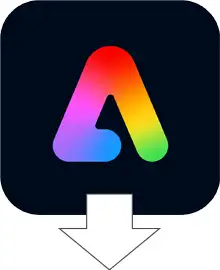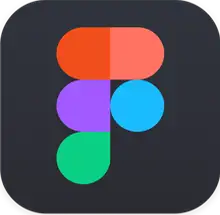Design Tools Compared: In-Depth Benefits, Practical Guidance & Affordable Alternatives
Last updated April 2025.

In the dynamic world of design, the choice of software can fundamentally shape your creative process and productivity. Whether you are a freelance graphic designer, a seasoned digital artist or a business professional managing social media, the right tool can make a world of difference.
With countless options available this guide provides an in-depth comparison of some of the most popular design tools on the market today including both established and newer options: Canva, Figma, Adobe Express, Adobe Photoshop, Adobe Illustrator and Adobe InDesign.
Throughout this guide we provide a breakdown of each application with detailed insights into the benefits, practical tips and best use cases. Our aim is to equip you with the knowledge you need to decide which tool best suits your needs. Additionally we have included practical advice, tips to optimise your workflow and provided a list of key highlights for each application. If you are looking for an affordable alternative to Adobe Creative Cloud or seeking to refine your design skills and tool options, this comprehensive guide is designed to help you navigate the evolving design software landscape.
To further develop your design skills XChange Training offers a range of courses dedicated to each of these applications. Explore our training courses for more hands-on learning and advanced techniques.
With countless options available this guide provides an in-depth comparison of some of the most popular design tools on the market today including both established and newer options: Canva, Figma, Adobe Express, Adobe Photoshop, Adobe Illustrator and Adobe InDesign.
Throughout this guide we provide a breakdown of each application with detailed insights into the benefits, practical tips and best use cases. Our aim is to equip you with the knowledge you need to decide which tool best suits your needs. Additionally we have included practical advice, tips to optimise your workflow and provided a list of key highlights for each application. If you are looking for an affordable alternative to Adobe Creative Cloud or seeking to refine your design skills and tool options, this comprehensive guide is designed to help you navigate the evolving design software landscape.
To further develop your design skills XChange Training offers a range of courses dedicated to each of these applications. Explore our training courses for more hands-on learning and advanced techniques.

Adobe Express
Adobe Express is tailored for quick and easy content creation. It is designed for individuals who require fast, eye-catching graphics for social media, short videos and web pages without the steep learning curve associated with more advanced software. Its integration with Adobe’s creative ecosystem ensures that even beginners can produce polished content in minutes.
Adobe Express Key
Benefits & Highlights
- Streamlined Design Process:
Adobe Express offers a simplified interface that speeds up the design process - Rich Collection of Templates:
Access hundreds of templates that are ideal for social media graphics, web stories, and video content - Integration with Adobe Stock:
Easily incorporate high-quality images and design assets into your projects - Easy Customisation:
Modify colours, fonts, and layouts with minimal effort to suit your brand or personal style - Mobile-Friendly:
Adobe Express is optimised for mobile use, making it a convenient option for on-the-go content creation
Adobe Express Practical
Tips & Advice
To make the most of Adobe Express, consider these practical strategies:
- Start with a Template:
Use pre-designed templates as a starting point and personalise them with your brand colours and fonts - Explore Design Assets:
Take advantage of Adobe Express’s integration with Adobe Stock to find high-quality images and graphics that enhance your design - Keep It Simple:
When creating social media content, simplicity is key. Use minimal text and bold visuals to capture attention quickly - Utilise Branding Tools:
Set up your brand kit within the platform to ensure all your projects have a consistent look and feel - Experiment with Video:
Adobe Express offers simple video editing capabilities—try creating short animated clips to engage your audience
Discover more about how to streamline your content creation process with our in-depth Adobe Express courses.
View Adobe Express Training coursesAdobe Photoshop
Adobe Photoshop has long been recognised as the industry standard for photo editing, digital painting and graphic design. Its robust suite of features empowers professionals to create, manipulate and transform images with precision. From detailed retouching to complex composite imagery Photoshop offers the versatility needed to tackle virtually any creative project.
Adobe Photoshop Key
Benefits & Highlights
- Advanced Image Editing:
Utilise layers, masks and adjustment tools to refine your images to perfection - Extensive Filters & Effects:
Access a wide range of filters, effects and customisable brushes to create unique artistic impressions - Industry-Leading Tools:
Tools such as the pen tool, liquify filter and content-aware fill set Photoshop apart for precision editing - Customisable Workspace:
Tailor the interface to suit your workflow making it easier to navigate complex projects - Rich Plugin Ecosystem:
Expand functionality with numerous third-party plugins that automate tasks or add new creative effects
Adobe Photoshop Practical
Tips & Advice
To make the most of Adobe Photoshop, consider these practical strategies:
- Learn Keyboard Shortcuts:
Familiarise yourself with Photoshop’s shortcuts to significantly speed up your editing process - Utilise Smart Objects:
Use Smart Objects for non-destructive editing ensuring you can make adjustments without compromising quality - Organise Layers:
Maintain a well-organised layer structure with proper naming and grouping which will make complex edits easier to manage - Experiment with Adjustment Layers:
Use adjustment layers for colour correction and tonal adjustments allowing for flexible modifications - Explore Tutorials:
Invest time in online tutorials and courses; our Adobe Photoshop training courses are a great resource for both beginners and advanced users
Whether you’re enhancing photos for a marketing campaign or creating intricate digital art, Adobe Photoshop remains indispensable for creative professionals.
View Adobe Photoshop Training coursesAdobe Illustrator
Adobe Illustrator is the definitive tool for vector graphics and illustration. It allows designers to create crisp, scalable images that retain their quality at any size—ideal for logos, icons, and detailed illustrations. Illustrator’s comprehensive drawing tools, along with its integration within the Adobe Creative Cloud make it a must-have for branding, packaging, and digital artwork.
Adobe Illustrator Key
Benefits & Highlights
- Scalable Vector Graphics:
Create designs that remain sharp and clear regardless of size, essential for logos and branding materials - Precision Drawing Tools:
Enjoy the power of the pen tool, shape builder and advanced typography features to produce intricate designs - Cross-Application Integration:
Seamlessly work with other Adobe applications for a consistent and efficient design workflow - Extensive Font Library:
Access a vast selection of fonts and typographic controls to bring creative ideas to life - Customisable Workspaces:
Tailor your workspace to suit your project needs enhancing productivity and creative flow
Adobe Illustrator Practical
Tips & Advice
To harness the full potential of Adobe Illustrator, try these practical strategies:
- Master the Pen Tool:
Spend time practising the pen tool as it is the backbone of vector drawing. Precision comes with practice and understanding anchor points - Utilise Artboards:
Organise multiple design iterations on separate artboards within a single file, making it easier to compare variations - Save Custom Brushes:
Create and save custom brushes that suit your style adding a personal touch to your illustrations - Work with Layers:
Maintain a structured layer system to manage complex designs ensuring elements are easy to locate and edit - Take Advantage of Tutorials:
Explore our Adobe Illustrator courses for in-depth lessons on advanced techniques and creative tips
Adobe Illustrator not only empowers you to create scalable and stunning visuals but also offers endless creative possibilities for any design project.
View Adobe Illustrator Training coursesAdobe InDesign
Adobe InDesign is the industry-leading tool for desktop publishing and layout design. It is widely used by professionals to create magazines, brochures, books and digital publications. InDesign offers advanced typographic control, master pages and a range of pre-press features that ensure your projects are production-ready. Its precision and robust feature set make it an essential tool for any professional working with multi-page documents.
Adobe InDesign Key
Benefits & Highlights
- Professional Layout Capabilities:
Perfect for creating intricate multi-page documents with consistent design elements - Advanced Typography:
Provides extensive control over fonts, kerning, tracking, and leading to produce polished text layouts - Master Pages & Templates:
Streamline your workflow by setting up master pages and reusable templates that ensure consistency across documents - Pre-Press Features:
Integrated tools and settings help prepare documents for professional printing and digital distribution - Collaboration and Integration:
Easily share files and collaborate with other Adobe Creative Cloud applications, such as Photoshop and Illustrator
Adobe InDesign Practical
Tips & Advice
To elevate your layout designs with Adobe InDesign, consider these tips:
- Plan your Layout:
Start with a clear plan or wireframe of your document. Knowing where text, images, and design elements will go can save time in the long run - Use Paragraph and Character Styles:
Create and apply styles to ensure consistency and speed up the formatting process - Leverage Parent Pages:
Use Parent Pages for elements that appear on multiple pages, such as headers, footers, and page numbers - Preflight your Document:
Always check for errors using InDesign’s preflight tools before sending your document to print - Experiment with Interactive Features:
For digital publications, explore interactive elements such as hyperlinks, animations, and buttons to engage your audience
For a deeper dive into layout design techniques and production-ready practices, our Adobe InDesign courses are the perfect place to start.
View Adobe InDesign Training courses
Canva
Canva has quickly emerged as a go-to online design platform for both novices and experienced designers. Its user-friendly interface and extensive library of templates and assets make it ideal for creating decent quality graphics without needing in-depth design expertise. Canva’s cloud-based nature ensures that projects are accessible anywhere and can be easily shared or collaborated on with team members.
Canva Key Benefits
& Highlights
- Intuitive Drag-and-Drop Interface:
Simplifies the design process, allowing you to focus on creativity rather than technical details - Extensive Template Library:
Offers a vast range of professionally designed templates for social media posts, presentations, posters and more - Accessible Online Platform:
Work on projects from any device with an internet connection and enjoy seamless cloud storage - Collaboration Made Easy:
Share designs with team members and clients, with real-time editing features - Cost-Effective:
Provides a free version with basic features, alongside premium plans that remain affordable compared to traditional software
Canva Practical Tips
& Advice
To get the most out of Canva, consider the following tips:
- Customise Templates:
Start with a template that closely matches your vision and tweak fonts, colours, and images to make it your own - Utilise Brand Kits:
For businesses use Canva’s brand kit feature to maintain consistent brand colours and fonts across all your designs - Explore the Asset Library:
Canva offers millions of free images, icons and graphics. Experiment with these assets to enhance your visual content - Keyboard Shortcuts:
Learn and use Canva’s keyboard shortcuts to streamline your workflow and save time - Integrate with Social Media:
Directly share your designs to various social media platforms from Canva, ensuring your content is always up-to-date
If you wish to expand your knowledge further, check out our dedicated Canva courses at XChange Training.
View Canva Training courses
Figma
Figma is a revolutionary cloud-based design tool that has redefined how teams collaborate on UI/UX projects. Its real-time collaboration capabilities allow multiple designers to work simultaneously on a project fostering a more agile and interactive design process. With its robust vector editing tools and prototyping features, Figma is perfect for creating interactive designs and comprehensive design systems.
Figma Key Benefits
& Highlights
- Real-Time Collaboration:
Multiple team members can edit, comment and collaborate in real time reducing the need for lengthy feedback cycles - Browser-Based Accessibility:
Figma works on any operating system through a web browser making it highly versatile and accessible - Powerful Prototyping:
Create interactive prototypes that allow you to simulate user interactions before development - Design System Management:
Maintain consistency in design through shared libraries and reusable components - Community Resources:
Access a wealth of community-created resources, plug-ins and tutorials to enhance your workflow
Figma Practical Tips
& Advice
To maximise your efficiency in Figma, here are some practical tips:
- Use Components and Styles:
Define reusable components and text styles to maintain consistency throughout your design - Master Prototyping Tools:
Experiment with Figma’s interactive prototyping to create dynamic user experiences and use built-in transitions to simulate real interactions - Leverage Plugins:
Figma’s plugin ecosystem can help automate repetitive tasks and add extra functionality; explore popular plugins like “Content Reel” for placeholder content - Version Control:
Take advantage of version history to track changes and revert to previous iterations if needed - Collaborative Reviews:
Organise regular design reviews using Figma’s comment feature to gather constructive feedback from peers
For those looking to delve deeper into UI/UX design with Figma, our comprehensive Figma training page offers practical exercises and expert guidance.
View Figma Training coursesExploring Affordable Alternatives & Complementary Tools
While Adobe’s suite of applications remains popular and the market leader among graphic design professionals, the market has seen a surge in affordable alternatives. Whether you’re looking for cost-effective options or tools that better suit a specific workflow, exploring alternatives can be a wise move.
The notable alternatives and complementary tools to Adobe CC Design are Figma, Canva and Express. These alternatives not only help in reducing costs but also open up opportunities to explore different workflows and creative approaches. Experimenting with various tools can lead to discovering a combination that perfectly fits your creative style and project needs.
Design Tools Frequently Asked Questions
Is there a one-size-fits-all
design tool?
No single tool is ideal for all types of design work. The best choice depends on your specific needs whether it is photo editing, vector illustration, UI/UX design or desktop publishing. It is often beneficial to combine tools to achieve the best results.
Which design tool is best for
a beginner?
Canva is great for beginners with its intuitive interface, rich template library and easy learning curve, making professional-quality design quick and simple. However, Adobe Express and other Adobe tools also offer beginner-friendly features such as guided templates, AI-powered design assistance and seamless integration with Adobe Creative Cloud - providing more flexibility as your skills grow.
Can Figma be used as a complete
replacement to Adobe XD for
UI/UX design?
Yes, Figma’s cloud-based platform and real-time collaboration features make it a strong replacement for Adobe XD, especially for teams that require flexible and interactive prototyping.
How can I maintain consistency in
my designs using these tools?
Each tool offers features to maintain consistency: Canva and Adobe Express use brand kits and templates; Figma allows shared libraries and components; Adobe Photoshop, Illustrator, and InDesign offer styles and master pages. Implementing these features is key to achieving a uniform look across all projects.
What are some key tips for
optimising my workflow?
Learning keyboard shortcuts, organising layers and components, utilising cloud-based collaboration and regularly updating your skill set through training courses can significantly streamline your workflow.
How do I decide whether to invest
in Adobe Creative Cloud or try
alternatives?
Consider your budget, the frequency of your design projects and the specific features you need. Adobe Creative Cloud offers comprehensive tools and industry-standard features, but if cost is a concern alternatives like Canva or Figma may provide the functionality you need at a lower price.
Where can I find more in-depth
tutorials and training?
XChange Training offers specialised courses for each of these applications. Visit our courses page to find detailed tutorials, practical exercises and expert guidance.
Can these tools be integrated for
a seamless workflow?
Yes, many of these tools are designed to work well together. Adobe’s ecosystem offers smooth integration between Photoshop, Illustrator and InDesign, while tools like Figma and Canva provide export options that allow you to incorporate your designs into other software seamlessly.
Design Tools Compared Summary
In a rapidly evolving creative landscape, selecting the right design tool can significantly enhance your workflow and creative output. From the simplicity of Canva to the sophisticated capabilities of Adobe’s suite, each application has unique strengths that cater to different aspects of design. Whether you are focused on social media content, intricate vector illustrations, photo retouching, or desktop publishing, understanding the benefits and practical applications of each tool empowers you to make informed decisions.
We encourage you to explore these applications further, experiment with their features, and continuously develop your skills through training and practice. At XChange Training, we are committed to providing the knowledge and resources you need to stay ahead in the competitive world of design.
For more detailed guidance and hands-on training, visit our training courses and take your creative projects to the next level.
Whether you choose to stick with the established industry standards like Adobe InDesign, Photoshop and Illustrator or explore innovative alternatives like Figma and Canva, the key is to find the right mix of tools that align with your creative vision and workflow. Remember, the best design tool is the one that not only meets your needs but also inspires your creativity.

 0345 363 1130
0345 363 1130 info@xchangetraining.co.uk
info@xchangetraining.co.uk




 Useful Links
Useful Links